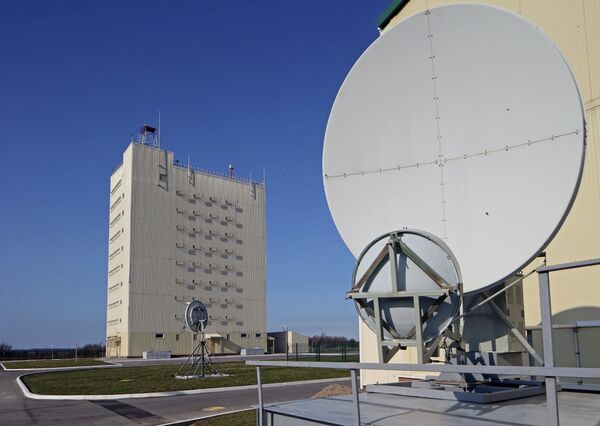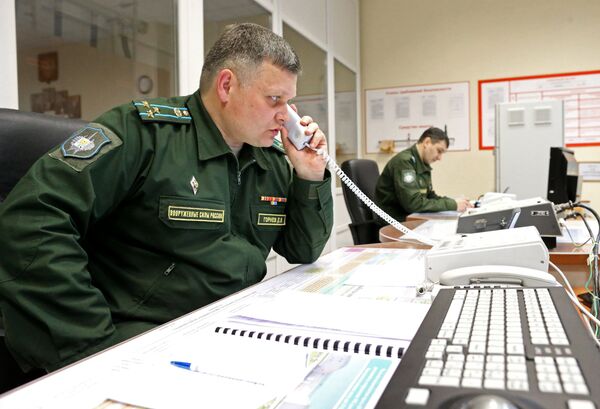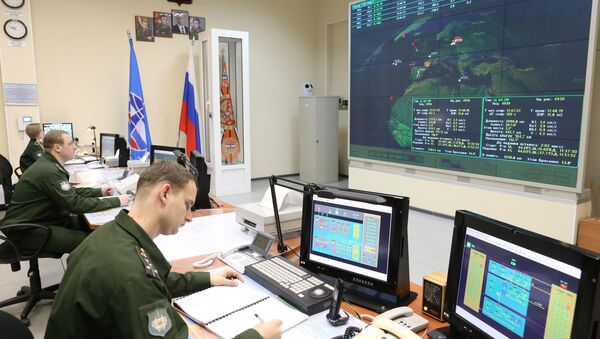On Wednesday, a Voronezh-class radar system in trial operation mode in Yeniseisk, Krasnoyarsk Region detected its first genuine US ballistic target, RIA Novosti reported. The type of target remained classified.
Voronezh-class radars, the latest generation of Russian stationary early-warning radar, take only about one and a half to two years to build, thanks to high levels of prefabrication and standardization. This gives the system a major advantage in terms of time and cost compared to its predecessors, which needed 5-10 years to get up and running. The stations also cost significantly less – about 1.5 billion rubles apiece ($19.6 million US), compared to the 10-20 billion rubles ($130-$261 million) their predecessors required.
The construction of the network of Voronezh radars is expected to be completed by 2018. At the moment, four of the planned ten Voronezh-class radars are in operation, with another three operating in trial mode. Two more are under construction, and one more is planned. The currently deployed systems monitor the airspace between Morocco and Spitzbergen, from Southern Europe to the North African coast, continental Europe (including the UK) and the Pacific from US West Coast to India.

In due course, Voronezh-class radars will replace all existing Soviet-era systems, including the Don-2N and Daryal-series radars, some of which ended up outside Russia after the collapse of the USSR.
In addition to land-based missile warning, Russia is building up a space-based component, in the form of the EKS 14F142 early warning satellite, which tracks missile launches based on their exhaust plume. The first 14F142 was launched last November, with another five set to be launched before 2020 to complement the Voronezh radar network.
Commenting on the Voronezh's success in detecting the US missile launch, Svobondaya Pressa columnist Vladimir Tuchkov suggested that it was just another demonstration of the radar system's capabilities, which are a real headache for Pentagon planners.
"To date, the four operating stations have done an impressive job," the analyst suggested. "Every year, they detect and track up to 40 space launches and ballistic missiles. They've warned us about 30 dangerous close encounters with space objects with Russian satellites. Eight times they saved the ISS from space junk."
Tuchkov explained that in September 2013, a Voronezh-DM at Armavir, Krasnodar Region "recorded the launch of two new US supersonic missiles in the Mediterranean. The Voronezh was the only radar of its kind in the world capable of detecting these missiles."
"The purpose of these launches was to test the response time and location of Syrian air defense systems capable of shooting down ballistic targets. The Pentagon claimed at the time that the test was aimed only at testing the combat capability of Israeli air defenses to train their military personnel. However, in a meeting with US and Israeli military attaches…Russian Deputy Defense Minister Anatoly Antonov showed the parameters of these launches," revealing the US's real intentions.

"This demonstrated to US policymakers that the new, fourth-generation Russian early-warning radar outclassed its US counterparts in a number of key characteristics," including detection time, signal processing speed, and the transmission of data on the detected object's speed and trajectory. And according to Tuchkov, in terms of target discrimination, the Voronezh outclasses its US counterparts "several-times over," with the capability to detect the coordinates of targets moving at hypersonic speeds and several hundred meters away with an error of no more than 11 meters.
"In terms of range, only the US's newest AN/FPS-132 radar system is comparable," according to the analyst.
Another benefit to the system, in line with the Russian military's broader efforts in recent years to create modular, standardized and interchangeable systems, is that it can be easily upgraded to increase its range and accuracy when the relevant technology comes along. Voronezh-SM, according to Tuchkov, has a resolution that would eventually allow the entire network to be converted into an effective radar system for missile defense.
Best of all, the analyst noted, was the fact that in spite of their high effectiveness, Voronezh-class radars are inexpensive compared to their predecessors, not only due to construction costs and their modular design, but also thanks to their low power consumption, which in turn requires a less cumbersome cooling system.





